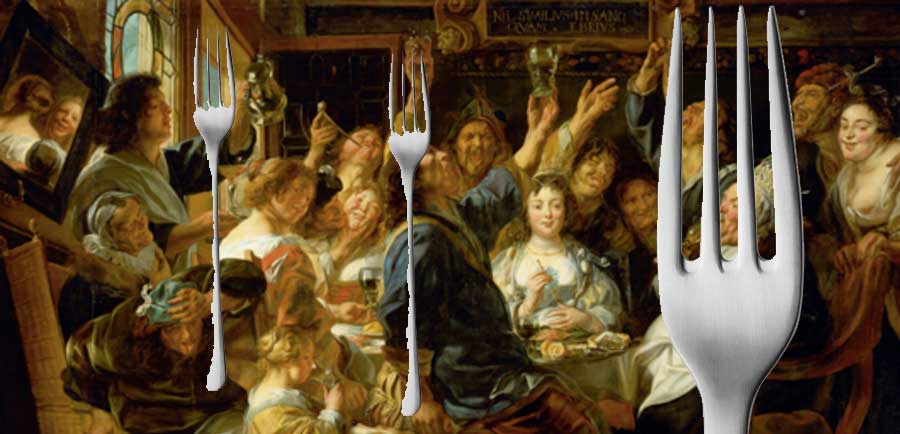History Says That Fork In Your Hand Actually Has Some Devilish Beginnings

AKA the Devil’s tool

Weird thought of the day: people ate with their hands for the majority of human history. Alexander the Great, Louis XIV, and Queen Elizabeth I all would have sat down to formal dinners at tables full of aristocrats and dignitaries of the highest order, and everyone would have just shoveled it in with their bear paws.
And while eating utensils in general weren’t always super popular or accessible, it’s forks specifically that didn’t gain acceptance or popularity until the last few centuries. Many in the Middle Ages thought the three-pronged utensil was reminiscent of the Devil’s pitchfork and thus was an unholy and ungodly instrument. According to Eduardo Galeano’s Mirrors, “every time musician Claudio Monteverdi felt obliged to use a fork, he purchased three masses to pay for his sins.”

Bronze forks made of iron during the 8th or 9th century, via Wikipedia
The fork didn’t really begin to catch on—at least among the aristocracy—until the 18th century in France, with several other cultures beginning to use them at least for the sake of appearances. Recounting a dinner party he attended in Turkey, a French military officer noted that, “I saw one woman throughout the dinner taking olives with her fingers and then impaling them on her fork in order to eat in them in the French manner.”
Forks became a more or less commonly-used item in Europe by the 19th century, especially with the rise of a growing middle-class who strove to emulate the aristocracy in all manners and customs. However, they still sometimes had a vaguely off-putting and “feminine aura,” with reports of sailors refusing to use them as late as 1897.
Written by: Toria Sheffield // Historybuff.com // Feature image via Wikimedia






















